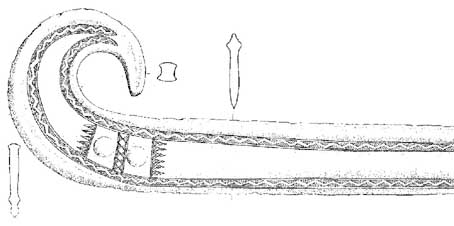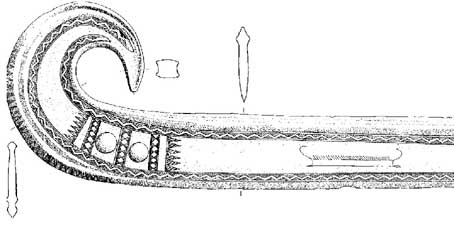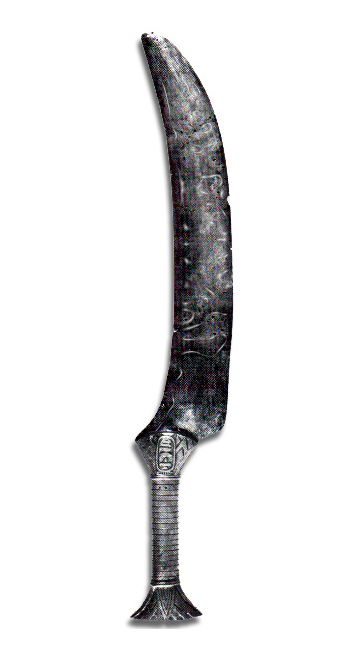They show that both were sharp in the straight section of the blade, but were more or less blunt in the curled up end.
I attach scans of the outer parts of the blades. I hope the scans are clear enough to make out the details in the cross sections.
The drawings show that the edges were shaped quite like that of an axe. Clearly sturdy enough to do damage on bone.
Both originals are a bit damaged, so it is no mystery one might think they are blunt, if you only see them as displyed in the rather dimly lit vitrines of the National Museum in Kopenhagen. As the curled up ends does not really show an edge, the impression that the whole blade might be blunt is easy to get.
The one I got to handle in Stockholm had the same cross section as the Danish ones: it is very similar in all respects. This would show that all three "weapons" would probably have been put to the same se, whatever that might have been.
Perhaps this can put a perspective on some seemingly blunt Kopesh as well: if the bronze is damaged by corrosion an axe style edge could well look like it has never been sharp. I do not mean to imply that all were originally sharp: the Iranian one in the British Museum was clearly blunt to begin with. I would expect other were just like that one.


